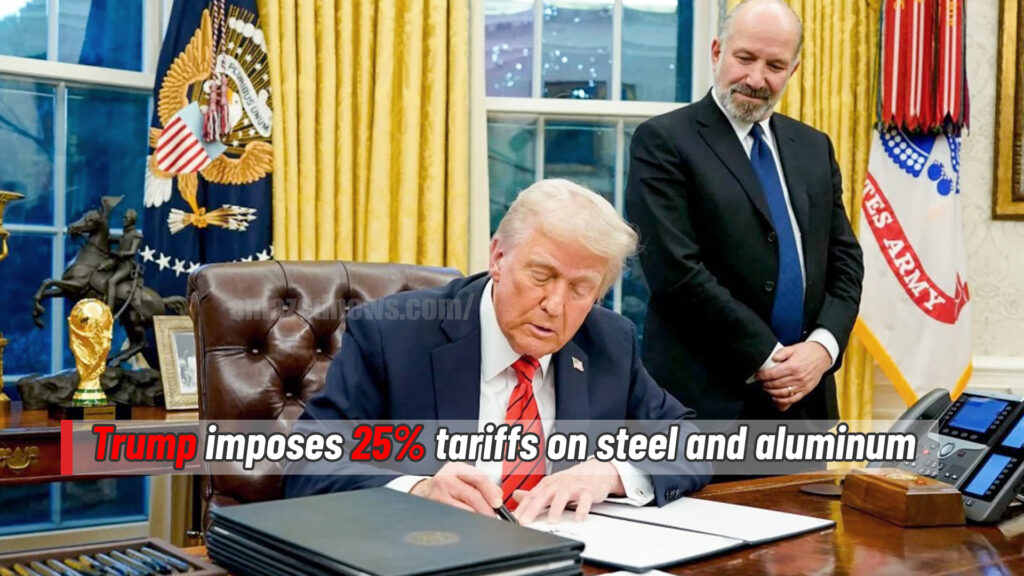
On March 4, 2025, the US will experience a significant policy change following an announcement by the president, Donald Trump that all imports of steel and aluminum will attract a 25% tariff. This move is different from the earlier trade policies where some nations were not included with the intention of helping and motivating the home industries since it does not exempt allied countries.
Background and Rationale
In the first years of his presidency, President Trump imposed a 25% duty on imported steel and 10% on aluminum before exempting Canada, Mexico, and European Union. However, the current ruling does not only bring back but also make it standard by imposing a 25% tariff on each metal without exception as it was earlier thought. The government claims that this measure will strengthen the country’s capacity to produce commodities, reduce reliance on overseas markets and create employment opportunities for Americans in the manufacturing sector.
Global Reactions and Potential Trade Conflicts
The news has been met with strong opposition among global trade partners. Canada and South Korea are among those who see the tariffs as a blow to their export-driven economies. In response to the US’s move, there is potential for cross-Atlantic trade war after EU threatened counter-measures hence posing greater risk towards free trade relationships across different continents and probably causing long economic warfare.
Impact on Australia
Being a strong ally of the United States but not spared either is Australia which is now caught in between two conflicting positions due to this decision. The latter has sparked off communication aimed at reminding each other of their common stand particularly in security and business matters. The Australian Minister for Industry and Science, Ed Husic, expressed hope that they would reach a deal considering that Australia had exported a lot more aluminum to the US than before. Domestic Policy and Future Tariffs
This stand by the government shows how it is keen on taking care of its industries first before noting about others. According to Peter Navarro, one of the advisors, these tariffs have been put in place to ensure that there is no any form of business imbalance that may lead to the collapse of most American industries because they are not capable of surviving stiff competition from abroad. In the future, the administration plans to impose new tariffs on strategic products that were not mentioned before like copper, pharmaceuticals and some certain computer chips brands but which ones exactly are kept in secret – all these imply that the government remains resolute in changing American trading policies.
Historical Context and Legal Framework
The use of tariffs as a tool for economic policy is not unprecedented. In 2018, these tariffs were present but there were exceptions for some allies. Be that as it may, the current approach is much stricter as it is universally applied. Under the law, this is a case where the administration is taking advantage of the International Emergency Economic Powers Act (IEEPA) claiming such actions to be taken for national security purposes and in order to secure proper functioning of key sectors of economy.
Economic Implications
There are different opinions among economists concerning the effects that may arise from these tariffs. Supporters claim that the latter will breathe new life into domestic manufacturing sector thereby increasing the number of jobs. However, the critics argue that there could be some negative impacts such as increased prices on consumers and worsened trade relationships with important partners. It is important to monitor how different countries affected respond and how elastic American industry is. Conclusion
President Trump’s move to levy 25% and 10% custom duty on imported steel and aluminum has changed the US trade policy significantly that can also affect other countries around the world. Therefore we need to watch out for response from other nations and keep an eye on our own industry for now.